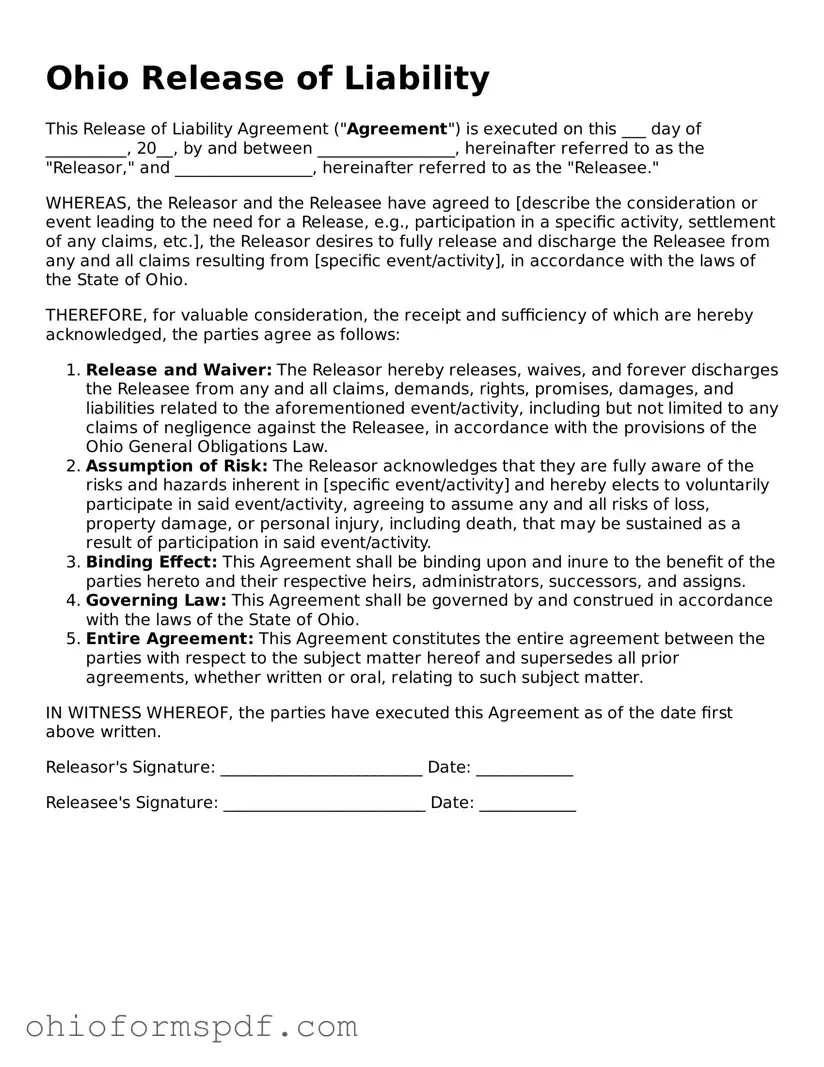What is an Ohio Release of Liability form?
The Ohio Release of Liability form is a legal document that individuals sign to waive their right to sue another party involved in an event, like an accident or an activity, that could potentially lead to injuries or damages. By signing this form, the person agrees not to hold the other party responsible for any harm that may occur.
When should you use an Ohio Release of Liability form?
This form is often used before participating in activities that carry a risk of injury or damage, such as sports events, recreational activities, or certain services. It can also be used after an accident happens, where the involved parties agree to settle their potential disputes without going to court.
Is the Ohio Release of Liability form legally binding?
Yes, once it is signed by all the involved parties, the Ohio Release of Liability form becomes a legally binding agreement. It is essential that all information provided on the form is accurate and that all signatories fully understand the terms they are agreeing to.
Do I need a lawyer to create an Ohio Release of Liability form?
While it's not necessary to have a lawyer create an Ohio Release of Liability form, it might be beneficial. A lawyer can ensure that the form complies with all state legal requirements and accurately reflects the agreement between the parties.
Can a minor sign an Ohio Release of Liability form?
In Ohio, a minor may not have the legal capacity to sign a Release of Liability form. Typically, a parent or legal guardian would need to sign on behalf of the minor to make the agreement effective.
What happens if someone refuses to sign an Ohio Release of Liability form?
If someone refuses to sign the form, they might be restricted from participating in the activity or event that requires the form for participation. In case of a post-accident situation, refusing to sign might mean that the dispute could end up being resolved through legal proceedings.
Can an Ohio Release of Liability form be revoked after it's been signed?
Typically, once an Ohio Release of Liability form has been signed and all parties have agreed to the terms, it cannot be revoked. However, there could be exceptional circumstances under which the agreement might be challenged in court, especially if it was signed under duress or with incomplete understanding of the terms.
